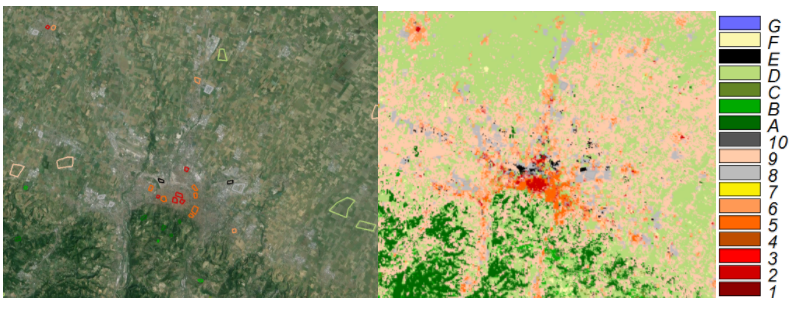FIMO team ranked among Top 10 in IEEE Data Fusion Contest 2017
The 2017 IEEE GRSS Data Fusion Contest, organized by the IEEE Image Analysis and Data Fusion Technical Committee, aims at promoting progress on fusion and analysis methodologies for multisource remote sensing data.
The contest received more than 800 submissions. 4 winner teams are invited to submit a paper to IGARSS 2017 held in July 23-28, 2017 at Texas, USA. FIMO team was ranked among Top 10 with the best submission achieved overall accuracy (OA) of 67.1%. For comparision, the top 1 and top 4 submission achieved OA of 74.94% and 69.89% respectively.
The 2017 Data Fusion Contest consisted in a classification benchmark. The task to perform is classification of land use (more precisely, Local Climate Zones, LCZ, Stewart and Oke, 2012) in various urban environments. Several cities have been selected to test the ability of LCZ prediction at generalizing all over the world. Input data are multi-temporal, multi-source and multi-modal (image and semantic layers).
Local climate zones are a generic, climate-based typology of urban and natural landscapes, which delivers information on basic physical properties of an area that can be used by land use planners or climate modelers [Bechtel et al., 2015]. LCZ are used as first order discretization of urban areas by the World Urban Database and Access Portal Tools initiative (WUDAPT, http://www.wudapt.org), which aims to collect, store and disseminate data on the form and function of cities around the world.
The LCZ classes in this study correspond to those of [Stewart & Oke, 2012]:
- 10 urban LCZs corresponding to various built types:
- Compact high-rise (class code in the ground truth: 1);
- Compact midrise (class code in the ground truth: 2);
- Compact low-rise (class code in the ground truth: 3);
- Open high-rise (class code in the ground truth: 4);
- Open midrise (class code in the ground truth: 5);
- Open low-rise (class code in the ground truth: 6);
- Lightweight low-rise (class code in the ground truth: 7);
- Large low-rise (class code in the ground truth: 8);
- Sparsely built (class code in the ground truth: 9);
- Heavy industry (class code in the ground truth: 10).
- 7 rural LCZs corresponding to various land cover types:
- Dense trees (class code in the ground truth: 11);
- Scattered trees (class code in the ground truth: 12);
- Bush and scrub (class code in the ground truth: 13);
- Low plants (class code in the ground truth: 14);
- Bare rock or paved (class code in the ground truth: 15);
- Bare soil or sand (class code in the ground truth: 16);
- Water (class code in the ground truth: 17).
An example for the city of Bologna (Italy) can be seen below:

More information about the contest can be found here
